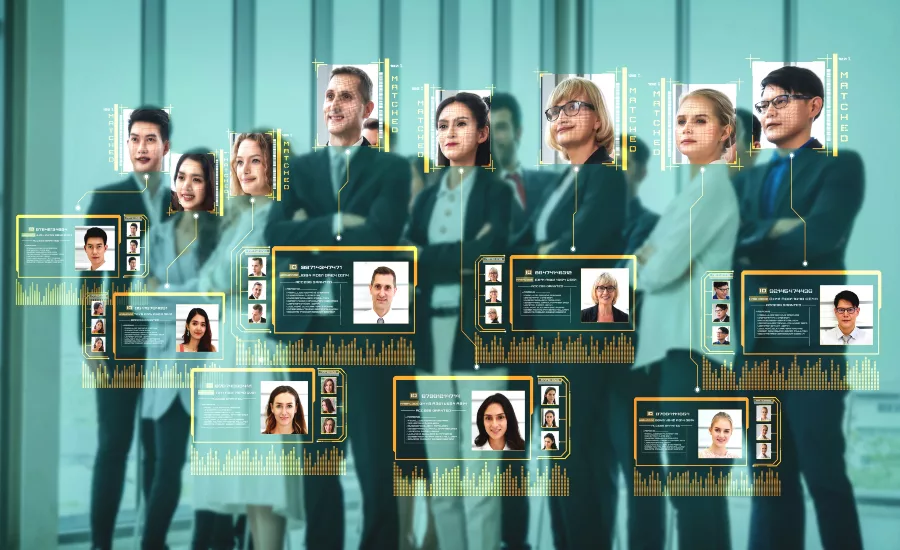Inclusivity — The true pillar of biometric registries

According to the World Bank, approximately one billion people worldwide are unable to prove their identity, primarily populations living in Sub-Saharan Africa and Southeast Asia. Not having an ID means not being able to access many fundamental rights and vital goods in life. Simply put, without an ID, people can’t legally work, get a loan or a banking account, own a cell phone, protect their property, access healthcare, and even participate in elections.
As those without ID usually have a low income and often cannot read or write — because identity documents are also necessary to be able to receive formal education and most forms of state aid — these populations face incommensurable problems. A study in India shows that 86% of the richest 20% of the population have an ID document, while 57% of the poorest 20% don’t. The issue also exacerbates the gender gap: In 62 countries, girls are less likely to be registered than boys.
By using fingerprints or portraits to register citizens, biometric registries have the most significant utility in countries with unreliable or non-existent national ID systems. Let’s explore how biometric authentication works and can bring empowerment to populations worldwide.
The changemakers: Biometric technology for freedom
Biometric registries can significantly improve the quality of life for many people, tackling diverse issues simultaneously. First of all, biometric IDs don’t require the ID owner to be literate, as a card reader can prove the identity with a fingerprint or facial recognition without additional human-written input. This facilitates processes like registering for voting, accessing government aid programs, or crossing national borders. Instead of filling out a whole form, citizens can simply show their biometric ID.
For most legal matters, it is crucial to determine one’s identity reliably. Biometrics open the door to anyone who does not have an ID card, even if they cannot prove their identity with other documents. Many people have no birth certification or any form of identification —something rather common in countries where babies are still delivered at home or where borders are disputed and frequently crossed. Birth registration, one of the major identity documents in India, is held by 72% of people for the whole country. Still, it varies between 67.1% in rural areas and 83.2% in urban spaces, showing how whole areas often fall victim to systematic exclusion.
Furthermore, biometric data is unmistakable. Once citizens’ biometric information is stored in the database, they cannot be confused with other people. The technology is advanced enough to ensure data quality, making it reliable even when multiple variables, including face, fingerprints, or iris recognition, are at play. At the same time, algorithms help identify the age of individuals, and there are ways to detect who are family members or relatives. By adding this type of information, biometrics allows for the creation of not only a full identity card but an actual identity, granting rights, security, and improved living conditions.
Being able to identify oneself is not just about inclusivity. It also helps every person exercise their right to vote. When identity theft occurs in elections, it robs citizens of their opportunity to participate in the democratic process. But with the help of biometric recognition technology, authorities can prevent scams successfully.
For example, in Uganda, the Electoral Commission gave poll workers an essential tool to check that an eligible person only votes once. By comparing voters’ fingerprints with the pre-registered prints on the central database, the software upheld a vital democratic process.
How to achieve inclusivity in registration
As in the Ugandan example, the main way to obtain data from all citizens comes in the form of a voter registry. Authorities can invite potential voters to scan their data, and the software can deduplicate the record to make sure no one can sign up twice. Once the database analysis is through, the registration teams can issue the election IDs. Each document will exist exactly once and require biometrics (usually a fingerprint), so people who cannot read, write, or accurately prove their identity can exercise their right to vote.
In Burkina Faso, the Independent National Electoral Commission (CENI) used a highly secure biometric solution to ensure voter identity, generating a list of all eligible voters. Software comparing fingerprint minutia points and cores could quickly validate records. Fingerprints were also checked for possible mislabeling at enrollment so that users could not interchange left and right-hand fingers.
Governments can easily add more services that leverage the collected ID data with a highly reliable biometric registry in place. Archiving the data and saving backups online and on offline devices, authorities can recuperate lost IDs or incorrectly treated data, for example, when someone is reported dead but is later found alive.
Like Burundi and Cabo Verde, several countries accept election IDs as a form of identification for banks or telecom companies and health insurance. Registered citizens can get access to government aid or other services, regardless of their education or status. These services reach a level of scale that would otherwise be considered unmanageable, but assuming a relatively simple voter registry, the complexity is quite manageable.
Other use cases of biometric IDs
Not only the underprivileged populations can benefit from IDs that store biometric data, but biometrics can make life easier for everyone. For example, in international travel, many airlines and airports have started accelerating their operations with the help of safe and secure authentication technologies.
By linking passengers’ identities to their faces, facial recognition enables far smoother travel. If installed correctly, the software can open the appropriate turnstiles, direct each passenger to the correct gate, process luggage in automated baggage carousels, and prevent mix-ups—all together achieving a highly satisfying airport experience.
But that’s not all. Security at airports is fundamental, and biometrics possess immense potential in this respect too. Facial recognition enables background checks before the passenger boards the plane and eases checking potential electronic visa issues. If cameras at airports can perform facial recognition, they can quickly locate lost or delayed passengers and restrict access to only those who have a ticket.
All this improves integration in airports and similar facilities: It breaks down language barriers, people with disabilities can move around more freely, and it accelerates passenger flow. By eliminating bottlenecks, such technologies improve visitor safety and prevent the spread of disease by directing foot traffic accordingly.
The use cases show that biometric technologies have the potential to revolutionize multiple areas of our lives, even if the current state of the technology is still far from reaching its full potential. Right now, industry frontrunners are evaluating, categorizing, and leveraging user patterns such as how people make keystrokes on a phone or tablet, use a mouse, write a signature, and even a person’s gait. These analyses will ultimately serve the purposes of fraud and identity theft prevention, inclusivity, and the seamless operation of services. With that in mind, the future of biometrics is full steam ahead.
Looking for a reprint of this article?
From high-res PDFs to custom plaques, order your copy today!





